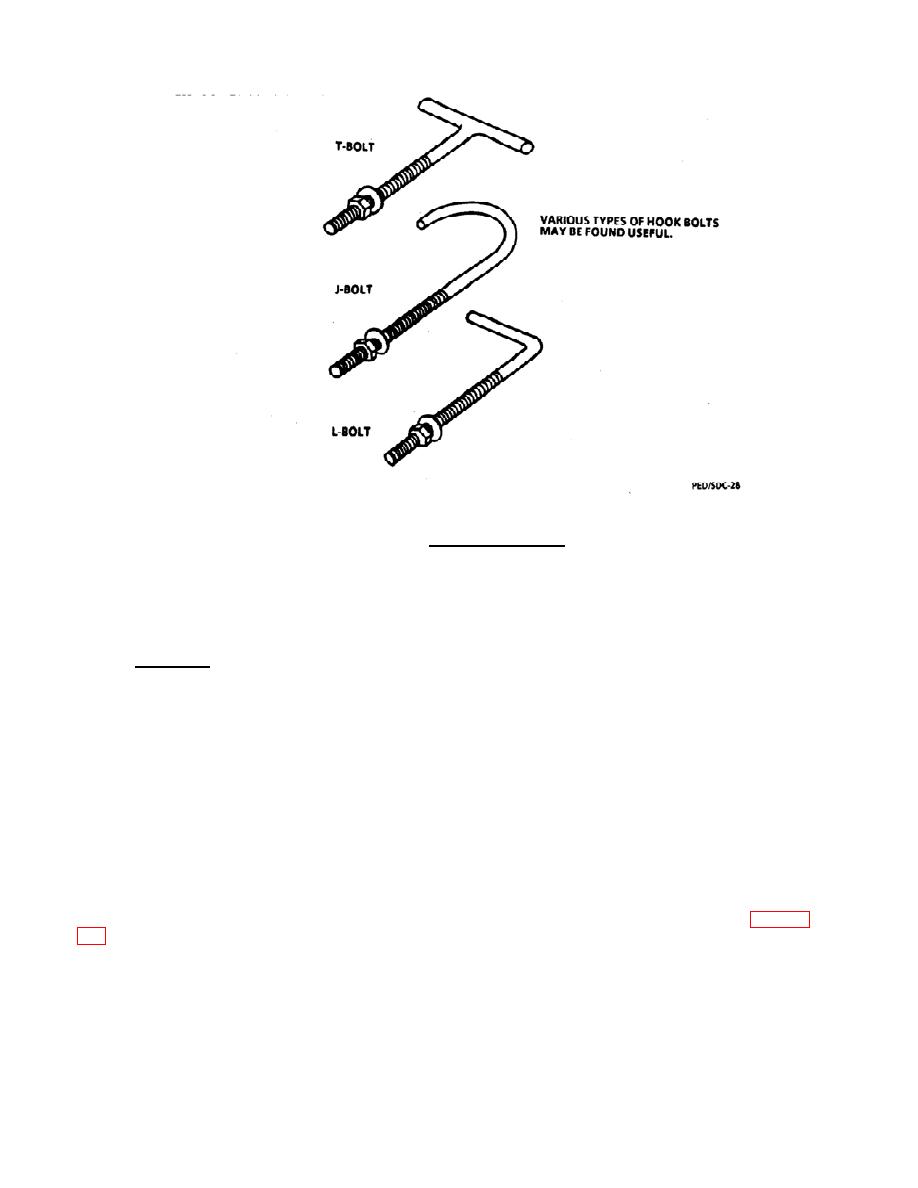
| Tweet |

Custom Search
|
|

|
||
 TM 55-1905-223-SDC
Types of Hook Bolts
ship, which will give an inside patch. Nuts and washers are provided for holding and tightening the patch. It
might be well to put large wings on the nuts.
Section IV. QUICK-SEALING LEAKS AND CRACKS
8-10. METHODS. Quick action in sealing leaks and cracks can prevent further flooding or even advance
the flooding boundary back to the area of damage. The following paragraphs describe a number of methods
for sealing leaks and cracks.
a.
Crack in steel plate. A fairly common type of leak is caused by a crack in a steel plate. When the
leak is in a flat surface away from frames and other interferences, generally it can be stopped by scraping the
surface smooth and applying a patch of sheet packing backed by a shole which can be held in place with
shoring.
b.
Crack adjacent to frame. When the crack is adjacent to a frame, it may be necessary to use
oakum held in place by the corner of a timber. Advantage should be taken of adjacent framing to use clamps
for holding the stopper in place.
c.
Torn plating. Upon reinspecting a crack, it may be found that it has increased in length. The
plating is being torn like paper. To prevent further cracking, drill quarter-inch holes at the extreme ends of the
crack, and plug the holes. If there is time, weld a plate over the crack. This technique is illustrated in FIGURE
d.
Caulking thin plating. Generally, it is not advisable to drive wedges into cracks in thin plating,
especially hardwood wedges, as the wedges tend to open the cracks. Marline, oakum, and rags often can be
used as effective caulking materials.
|
||
 |
||